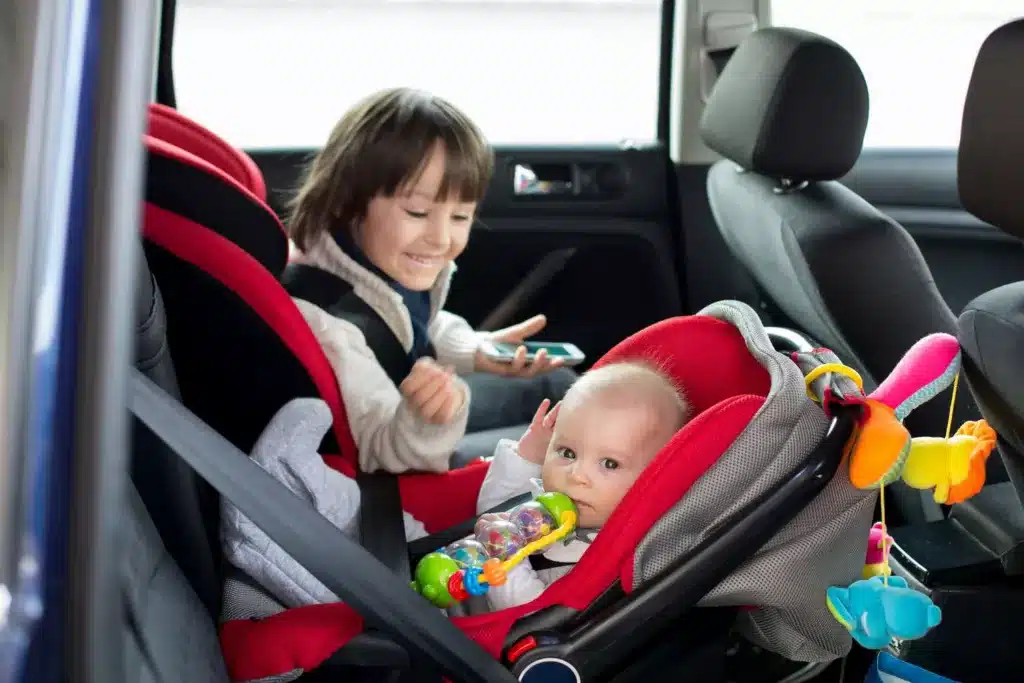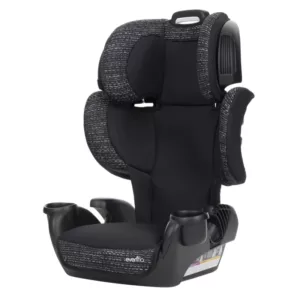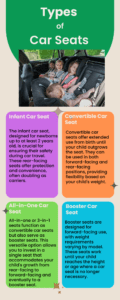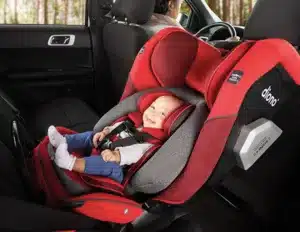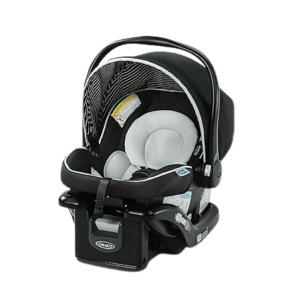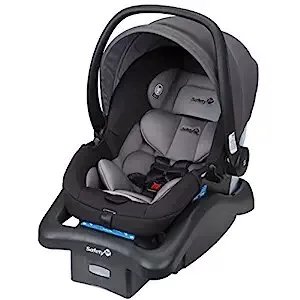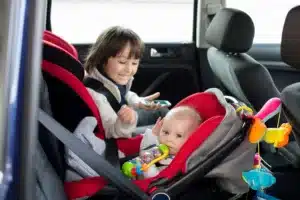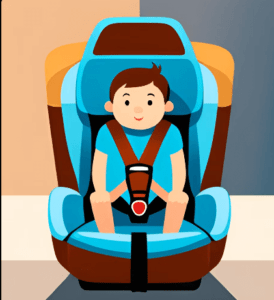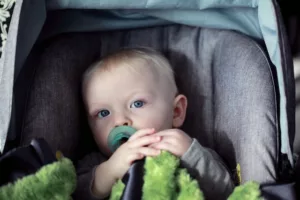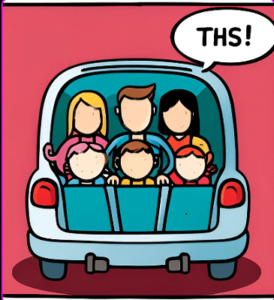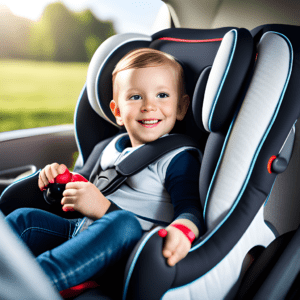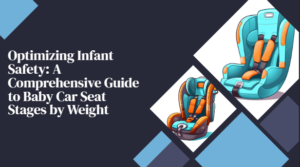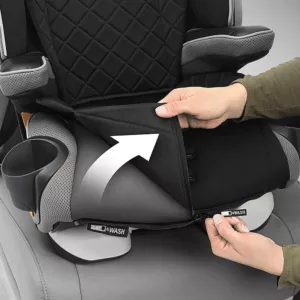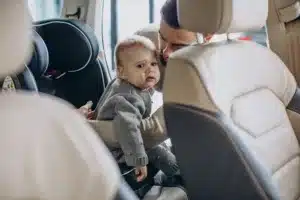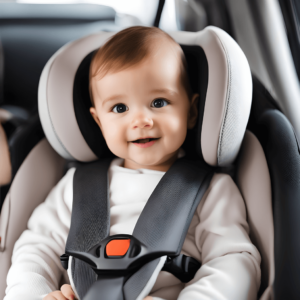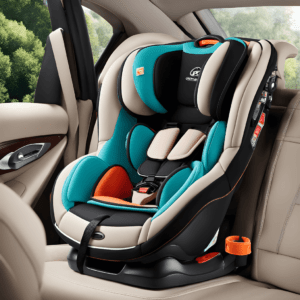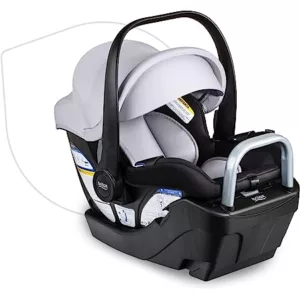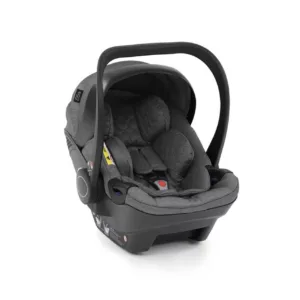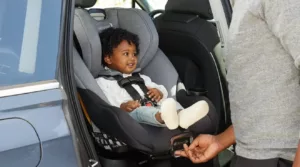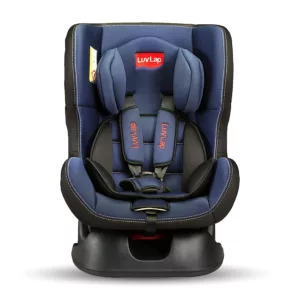10 Top Child Safety Plans in Car Emergencies Protecting Your Little Ones. Discover essential tips and strategies to ensure your child’s safety during car emergencies.
Thank you for reading this post, don't forget to subscribe!Learn about the best practices for securing infant car seats and protecting your precious cargo on the road.
Every year, car accidents claim the lives of numerous infants and cause injuries to thousands of babies. These tragic incidents could often be prevented by properly using car seats. But what happens when an emergency strikes? Are you prepared to keep your baby safe? In this extensive article, we will explore:
The significance of child car seat safety during emergencies.
- The types of emergencies that can occur while driving with a baby.
- An informative, step-by-step guide providing essential instructions on how to respond during an emergency.
- Emphasizing the importance of practicing and preparing for emergencies.
Unveiling the Road Emergency Statistics – Child Safety Plans in Car Emergencies
Did you know car accidents are a leading cause of death for children under 14? Startlingly, recent projections by the National Highway Traffic Safety Administration estimate that approximately 42,795 individuals could experience fatalities due to motor vehicle traffic crashes in 2022. Furthermore, there were 1,093 child traffic fatalities in the United States alone in 2020.
In 2020, motor vehicle crashes resulted in the tragic deaths of 607 child passengers aged 12 and below, and over 63,000 reported injuries. Shockingly, 38% of these children who died in accidents were not properly secured with seatbelts. The need for comprehensive safety measures in car emergencies becomes evident.
Table of Contents
ToggleInstalling Car Seats Correctly – Protecting Your Baby
It is crucial to have a properly installed car seat to protect your baby in an accident. Astonishingly, recent studies indicate that over 80% of car seats are not installed correctly, significantly increasing the risk of injury or death5. Don’t let your baby become a statistic—ensure you install your car seat correctly and adhere to all safety guidelines.
Types of Emergencies Driving with Babies – Child Safety Plans in Car Emergencies
When driving with a baby, there are various types of emergencies that can occur, each with their own unique risks and challenges.
Following are the main types of emergencies parents could face:
Medical Emergencies
While on the road, babies, like anyone else, can experience unexpected medical emergencies. These include choking, sudden illness, seizures, or severe allergic reactions. Being prepared for such situations involves having basic knowledge of first aid techniques tailored to infants and children. Additionally, keeping a well-stocked first aid kit in your vehicle can provide essential supplies in a medical emergency.
Three types of medical emergencies are as follows:
- Accidents
- Vehicle Breakdowns
- Extreme Weather Conditions
Road Accidents – Child seat safety in emergencies
Even with cautious driving, road accidents can happen unexpectedly. Crashes, involving rear-end collisions, and various other types of accidents can pose a significant safety risk to your baby. Practicing defensive driving, obeying traffic laws, and staying focused while behind the wheel is crucial. Ensuring that your baby is properly secured in an age-appropriate car seat and that the seat is correctly installed can significantly reduce the risk of injuries in a road accident.
Vehicle Breakdowns – Car Accident Safety for Kids
Experiencing a vehicle breakdown while traveling with a baby can be stressful. It is important to be prepared by maintaining your vehicle regularly and checking the tires, brakes, and engine to reduce the likelihood of breakdowns. Additionally, having a roadside assistance plan or knowing how to handle common breakdown issues can help you handle such emergencies swiftly and safely.
Extreme Weather Conditions – Child Safety Plans in Car Emergencies

Weather conditions can change rapidly while on the road. Ensuring preparedness for extreme weather conditions, including heavy rain, snowstorms, high winds, or extreme heat, is vital to safeguard your baby’s well-being. Stay updated on weather forecasts before your journey and adjust your travel plans to avoid hazardous conditions. Pack suitable clothing, blankets, and necessary supplies to keep your baby comfortable and shielded from weather conditions while traveling.
Driving with babies requires a proactive approach to safety, including being prepared for various emergencies that may arise on the road. By comprehending the potential hazards and implementing essential precautions, you can guarantee the safety and well-being of your baby throughout your travels. Stay informed, stay vigilant, and always prioritize the safety of your little one.
Emergency Plan for Tackling Uncertain Conditions while Driving with Babies – Child Safety Plans in Car Emergencies
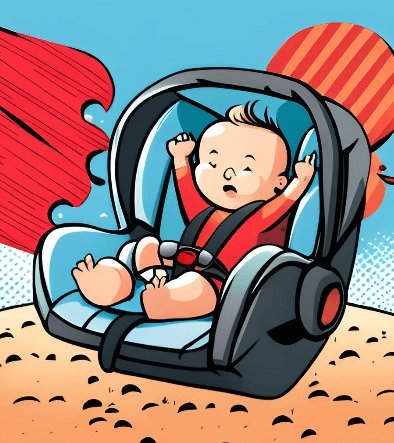
Let’s explore the essential steps of an effective emergency plan tailored specifically for uncertain conditions on the road.
1. Pre-Trip Preparation – Child Lock Safety in Car Emergencies
Before hitting the road, prioritize vehicle maintenance. Ensure your car is in optimal working condition and has a full gas tank. Stay informed about weather conditions and road closures along your planned route. Pack essential items such as a well-stocked first aid kit, extra diapers, wipes, snacks, water, and blankets.
2. Secure Proper Restraints – First Aid for Children in Car Accidents
Use an age-appropriate car seat for your baby and ensure it is properly installed. Double-check that the seat is correctly fastened and adjusted according to safety guidelines. Regularly inspect the car seat for wear or damage and replace it if necessary to maintain optimal safety.
3. Create an Emergency Kit – Car Emergency Kits for Child Safety
Prepare an emergency kit specifically for your baby. Include extra clothes, diapers, formula, baby food, medication (if applicable), and comfort items. Pack a flashlight, extra batteries, a multi-tool, and a portable phone charger to stay prepared for unexpected situations.
4. Stay Alert and Observant – Child Safety Measures in Car Crashes
Maintain focus while driving, avoiding distractions like mobile devices. Regularly check on your baby’s well-being and address any immediate needs. Stay aware of the surrounding traffic and anticipate potential hazards on the road.
5. Communication and Contact Information
Keep important contact numbers available, including emergency services, pediatricians, and roadside assistance. Inform a reliable family member or friend about your travel itinerary and provide them with the estimated arrival time.
6. Plan Rest Stops – Car Emergency Preparedness for Children
Schedule regular breaks to allow you and your baby to rest, stretch, and attend to any needs. Identify safe rest areas or baby-friendly locations along your route in advance. Taking regular breaks during your journey will not only keep you refreshed but also ensure that you stay focused on the road ahead.
7. Monitor Weather Conditions – Child Seat Safety in Emergencies
Stay informed about changing weather conditions, especially if traveling long distances or through areas prone to severe weather. Adjust your travel plans to avoid hazardous conditions and ensure your baby’s safety.
8. Trust Your Instincts – Child Passenger Safety in Emergency Situations
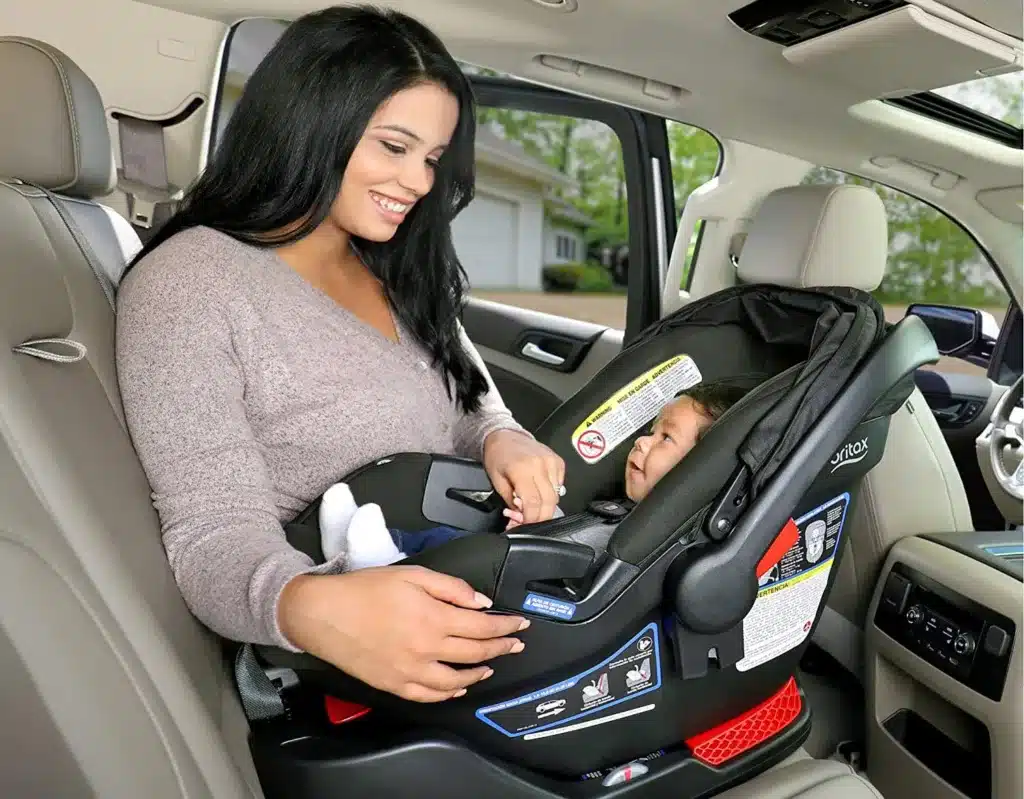
If you sense any potential danger or feel uncomfortable, find a safe place to pull over and assess the situation. Trust your parental instincts and take appropriate action to ensure your baby’s safety.
9. Stay Calm and Reassuring – Car Accident Safety for Kids
In an emergency or uncertain condition, remain calm and composed. Comfort and reassure your baby, providing security during stressful situations. Your composure will help keep both you and your baby calm and focused.
10. Continuous Education and Preparedness
Stay updated on CPR and first aid techniques tailored to infants and children. Participate in driving safety courses or workshops on emergency preparedness with babies. Continuously practicing and refreshing your knowledge will help you respond effectively during emergencies.
Remember, emergencies can be unpredictable, but being prepared and having a plan will help you confidently navigate uncertain conditions. Regularly review and practice your emergency plan to ensure you are well-prepared to handle unexpected situations while driving with your baby.
By streamlining the essential steps and eliminating unnecessary repetition, this concise emergency plan provides the necessary guidance to keep your baby safe during uncertain conditions on the road. Stay prepared, stay vigilant, and prioritize the safety and well-being of your precious little one.
Practice and Preparation to Deal with Unthinkable Emergencies
Practicing and preparing for emergencies with a baby is crucial to ensure you can act quickly and effectively when it matters most. It’s important to familiarize yourself with the proper use of your baby’s car seat and the steps you need to take in case of an emergency.
One way to practice emergency scenarios is to simulate them at home with a doll or stuffed animal. It can help you get comfortable with the steps you need to take, such as unbuckling the car seat, removing your baby from the car, and administering first aid if necessary. Additionally, there are online resources and classes available that can provide more detailed information on emergency procedures.
A Guide for Kids on Dealing with Strangers and Unfamiliar Situations – Child Safety Plans in Car Emergencies
When dealing with strangers and unfamiliar situations, children must learn key points about personal safety and seeking help from trusted authorities. Let’s explore some essential tips to help kids stay safe in unfamiliar situations clearly and concisely.
Understanding Strangers
Children must understand that strangers are people they don’t know. While most strangers are kind and helpful, it’s crucial to be cautious and take precautions when dealing with unfamiliar individuals.
Safety Bubble
Teach children about personal space and a “safety bubble.” Please encourage them to keep their safety bubble intact, especially around strangers. Remind them to keep car doors locked and windows open to control their environment during emergencies.
Trusted Authorities
Children should know who they can trust for help in an emergency. Examples of trusted authorities include police officers, firefighters, and paramedics. Teach children how to dial emergency services like 911 or use a nearby phone to call for assistance. These trained professionals help in difficult situations and ensure their safety.
Recognizing Safe Places
Children should know safe places to seek help. These can include nearby shops, businesses, or houses with trustworthy adults. Teach them to identify familiar establishments or people they can approach for assistance. It’s important to emphasize that they are never alone, and caring individuals are ready to lend a helping hand.
Secret Code Words
Create a secret code word with your child and trusted adults. This special word will be known only to them and the designated adults. If someone claims to know their parents or attempts to pick them up but doesn’t know the secret code word, they should never go with that person. This simple strategy helps ensure their safety and avoid potential dangers.
Attracting Attention
Teach children to be loud and draw attention in uncomfortable situations where they feel threatened or unsafe. Please encourage them to shout, scream, or whistle to make noise and catch people’s attention nearby. Let them know that making a scene is okay when their safety is at stake, and others will come to their aid.
Staying with a Trusted Adult
During car emergencies, it is generally safer for children to stay inside the vehicle until help arrives. Leaving the vehicle and wandering alone can increase risks. Instruct them to wait patiently, buckle up, and keep their seatbelt on until a trusted adult or emergency responder arrives to assist them.
Conclusion
In conclusion, parents and caregivers must prioritize baby car seat safety in emergencies. Having a correctly installed car seat and knowing how to respond in emergencies can be crucial in safeguarding a child’s life, considering the concerning statistics of car accidents involving infants and the inherent risks associated with unforeseen situations.
We have discussed the different types of emergencies that can occur while driving with a baby, such as car accidents, fires, and flooding. We have also provided a step-by-step guide on what to do in an emergency and emphasized the importance of practicing and preparing for such situations.
Keep in mind that preparedness can be the key factor in handling an emergency effectively. By taking the time to properly install a car seat, familiarize yourself with emergency procedures, and practice emergency scenarios, you can ensure the safety of your precious cargo.
Thank you for taking the time to learn about baby car seat safety in emergencies. Let us work together to keep our little ones safe on the road.
Frequently Asked Questions – FAQ
How can I make my baby safe in the car?
Ensuring your baby’s safety in the car involves:
- Use a properly installed car seat.
- Keep them in a rear-facing position.
- Secure the harness straps snugly.
- Position the car seat in the back seat.
- Avoid bulky clothing.
- Regularly inspect the car seat.
- Always avoid leaving your baby unattended in the car.
- Secure loose objects in the vehicle.
What is utilized to ensure a child’s safety in a car?
A car seat is used to keep a child safe in a car. It is designed to protect and secure the child during travel. Properly installing and using a car seat according to the child’s age, weight, and height is essential for ensuring their safety on the road.
How can we keep children safe during transportation?
Properly use car seats and seat belts, ensure childproofing measures in vehicles, and provide adult supervision to keep children safe during transportation.
How do car accidents affect babies?
Car accidents can severely impact babies, including injuries and even fatalities. The impact and force of a collision can result in various injuries for babies, including head trauma, fractures, internal injuries, and whiplash. Babies are especially vulnerable due to their fragile bodies and developing neck muscles. Using appropriate car seats and following safety guidelines is essential to minimize risks and protect babies during car accidents.
Related Articles
